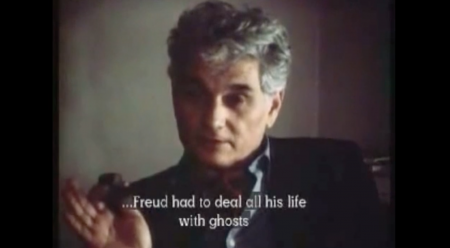I first learned about Freud through Derrida, sitting in on a course on deconstruction and psychoanalysis. Derrida focused more on Freud’s later writings — the essays on telepathy, Moses and Monotheism, Beyond the Pleasure Principle. He took Freud at his word, and tried to emphasize the consistency in his thought as it had evolved over the years. I liked the peripheral work. I liked the seriousness with which Derrida treated it, too. It’s how I wanted to write.
I read Derrida’s “Freud and the Scene of Writing,” where he talks about Freud’s schema of the mind and how he uses writing not as a metaphor but as a representation. [2] I read “Archive Fever,” an essay about the death drive, the archive, and the aporetic forces of self-destruction and self-preservation. In Derrida’s words: “L’Un se garde de l’autre pour se faire violence.” [3] The unified self is haunted by the forgotten memory of its own fragmentation.
In Derrida’s seminar, The Beast and the Sovereign, he compares forms of burial — cremation versus inhumation. He prefers cremation, in a way, because it is the most paradoxical. You commit a second murder, deprive the dead of a place, and in doing so, you confront a restless and infinite mourning. On this point he quotes Paul Celan: “The world is gone, I must carry you.” [4] Cremation inaugurates the beyond of a corpse, a mourning “infinite and null.” [5] The urn is both a replacement for Freud’s body and a container for his ashes. It is the archive of his second death.
